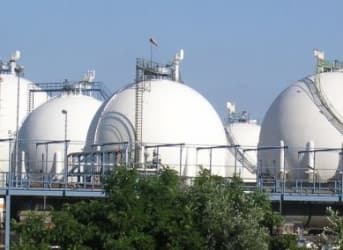The peak will have to wait – at least in the United States. According to a new report from the Energy Information Administration (EIA) US proved reserves of both crude oil and natural gas are on the rise. The growth – roughly 10 percent for each – is yet another affirmation of shale’s staying power and adds weight to an increasingly heavy diplomatic stick.

Source: EIA
In 2013, proved reserves of crude oil and lease condensate increased 3.1 billion barrels (bbl), exceeding 36 bbl for the first time since 1975. Natural gas proved reserves are higher than ever before and 2013’s increase of 31 trillion cubic feet (Tcf) brought the US total to 354 Tcf. North Dakota was responsible for about 61 percent of the net increase in oil while natural gas gains were spread more evenly across Texas, Pennsylvania, Wyoming, Oklahoma, and Colorado. New discoveries were minimal and extensions to existing tight oil and shale gas plays were largely responsible for the rising figures.
Related: Global Drilling Slowdown On The Way
Reserve growth was accompanied by a similar boost to production. Total crude oil and lease condensate production in 2013 increased 14 percent from 2012 levels to 2.7 bbl – the country’s fifth annual production increase. Natural gas production growth was more ordinary at 1.4 percent, but 26.5 Tcf represents a new high-mark as well as the eighth consecutive year that production rose. Imports for both crude oil and natural gas were down 10 and 8 percent respectively.
Before continuing, it is important to note that 2015, and it’s presumed lower prices, may not be so kind to future proved reserves which indicate the resources that are recoverable under existing economic and operational conditions. Still, the EIA report and outlooks from the International Energy Agency dispel the notion that shale gas and tight oil producers cannot operate under the current market conditions. 
Source: EIA
US crude oil production is expected to add 800,000 barrels per day (bpd) in 2015, and that number could soar as high as 1.5 million bpd. Shale oil is steadily moving down the cost curve and since 2012 breakevens have dropped by up to $30 per barrel. The Bakken and Eagle Ford plays – which accounted for almost 95 percent of the proved reserve growth in 2013 – can sustain oil prices as low as $50 per barrel. One estimate places the national average breakeven point at $73 per barrel, well below the EIA’s price projections for 2015. Natural gas production will also see a bump next year, and even with relatively low prices the US becomes a net exporter of natural gas in 2018.
Related: The Oil Glut And An Inevtiable Oil Price Rebound
US production and reserve growth are altering its trade relationships and throwing more influence behind its geopolitical agenda. The change is most evident in Russia, who, less than a decade ago, was seen by the US as a growing market. Now, the country’s leverage in Europe is at an all-time low and little anticipated competition on the Asian market looms. Toward 2040, China, India, and other developing economies in Asia will account for 72 percent of the net world increase in liquid fuel consumption. With demand flat or falling in most OECD member states, nations will look to flex their political muscle across Asia.
While better positioned than some, the US still has room to grow – ideally through subtraction, by eliminating as many barriers to cooperation as possible. The case for oil exports takes on greater urgency as prices dip and competing sources limit the window of opportunity. The psychological impact of American oil overseas is worth weighing as much, if not more than the economic benefits.
By Colin Chilcoat of Oilprice.com
More Top Reads From Oilprice.com:
- The Cost Of Energy Storage
- Something Doesn’t Add Up In Bakken Production Figures
- Cheap Oil Has Created Some Fantastic Opportunities – Stocks To Watch

















